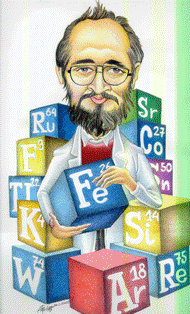
INTRODUCTION
• Transition Metal is one which forms one
or more stable ions which have
incompletely filled d orbital
• We will go further on the physical
properties of the metal, their
magnetisms, electron configuration and
the chemical reactions that are involved
__________________________________________________________
PROBLEM BASED LEARNING
THE MAIN REASON
• Exposure of copper to environment will causes oxidation and production of
green salts.
•Exposure to hot and humid environment
• Person which has high acidity level in his/her skin
• We release chemicals from our bodies in the forms of sweat
• These materials are acidic in nature
• They cause metals to corrode, or turn, at least on the surface of the metal, to a salt compound of the metal
• The green from the ring is caused by oxidation
• The silver will oxidize, so, it give a tarnished looked
• The green layer on the copper is called patina
• This patina protect the copper from further corrosion
• The patina forms when airborne sulfur compounds react with the copper
• It always form in damp air
• The major of patina is Copper (II) sulfate (CuSO4) and has a green color


Wednesday, February 18, 2009
Posted by grOup 7 at 4:02 AM 0 comments
Tuesday, February 17, 2009
PROBLEM 2
THE MAIN REASON
• Brown water running from a faucet is due to insoluble Fe2O3 in water
• Elemental iron reacts with non-oxidising acids to form Fe2+, which oxidizes in air to Fe3+
• Fe3+ is soluble in acidic solution, but forms a hydrated oxide as a red-brown gel



Magnetism Properties
•Iron exhibits ferromagnetism, a much stronger form of magnetism than the others
•It arises when the unpaired electrons of the atoms or ions in a solid are influenced by the orientation of the electrons of their neighbours
Posted by grOup 7 at 8:27 AM 0 comments
________________________________________________________
TRANSITION METAL
THE ANSWER
• Both copper and iron are transition
metals.
• Transition metals occupy the d block of
the periodic table from group 3 to group
12.
______________________________________________
• Have large charge to radius ratio
Effective nuclear charge increases while atomic radii are similar across the period.
• High density
Transition elements are much denser than s- block elements because of the small decrease in metallic radius and atomic mass increases across the period.
• High melting point and boiling point
Strong metallic bonding due to delocalization of electrons facilitated by the availability of both d and s electrons.
• Ductile
• Malleable
• Conduct electricity and heat
• Show variable oxidation states
Most have +2 oxidation state due to loss of s electrons. Oxidation number greater
than 2 is due to the loss of d electrons as well as s electrons.
• Form coloured ions and compounds
When there are ligands present, the 3d level splits up into two levels of energy, with two orbitals at a slightly higher level and three at a lower level. The energy jump when an electron is transferred between two of these levels corresponds to the energy of visible light.This is why the solutions of the ions are coloured.
• Form compounds with profound catalytic
activity
• Form stable complexes
_______________________________________
METAL'S MAGNETISM

Posted by grOup 7 at 8:27 AM 0 comments
Posted by grOup 7 at 7:50 AM 0 comments






